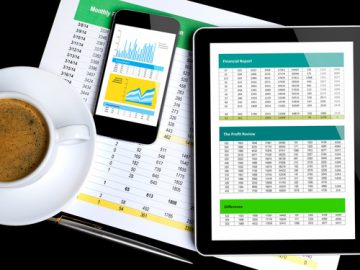Making Tax Digital is not the end game
Tax Systems on why MTD is only one key step in our ever-growing technological journey
Tax Systems on why MTD is only one key step in our ever-growing technological journey

Making Tax Digital (MTD) is coming into force in less than two months and many businesses are busy preparing to become compliant.
Caught on the cusp of one of the biggest tax changes the industry has ever seen, it’s perhaps understandable that tax experts are focused on the short term goal of preparation. But in doing so, these businesses are losing sight of MTD in its wider context and endangering the viability of their investment. Change, motivated by compliance, could see these businesses fail to realise the cost and productivity benefits associated with automation.
To gain a wider appreciation, accountants need to start considering the future of tax and how MTD fits into this.
As a refresher, MTD for VAT was announced back in 2017 by the UK government. By 1 April 2019, the majority of businesses with a taxable turnover above the VAT threshold of £85,000 must use software to submit their tax returns digitally, according to HMRC’s rules. Some businesses are deferred from the 1 April deadline and will need to prepare by October 2019.
Despite many UK businesses being forced to comply with this ruling, a recent survey by Thomson Reuters has found that 70 percent of tax professionals are stalling on MTD for VAT – they have developed plans but not started implementation.
Predicting that businesses would find the change difficult, HMRC has granted a soft-landing period for all those preparing. This means that businesses will not be fined for a lack of compliance until April 2020. It’s worth noting, however, that the penalty system will also be changing. A points-based system is due to be introduced at the same time. This should mean those required to submit multiple returns will no longer be penalised multiple times.
VAT is just the beginning, with the digitalisation of the rest of the tax regime set to follow. The UK government has made it clear that MTD will be extended to other taxes, such as corporation tax, although this will only come into play next year at the very earliest.
MTD is undoubtedly a seismic shift but it should be considered as just one of the drivers of automation of the tax function. It’s part of bigger trend that has been ongoing for some time following global reforms such as CbCR, BEPS and CRS. These changes have taken their toll on the business, triggering an increase in workload at a time when budgets are under strain, requiring the business to improve efficiency. Together, these elements have combined together to create a continuous journey towards digital and technological improvement.
MTD is a part of this movement. It’s a piece of regulation HMRC has introduced to tackle the tax gap (estimated to stand at £33billion by the end of 2017), combat errors and enable businesses to manage tax returns better, and will, for the first time, set a minimum bar of digitalisation for a tax process. This is key because it means MTD is very much the starting point for these businesses on their road to automation, with the introduction of the other taxes signalling yet further change.
Corporation tax will become part of MTD in the coming years. Traditionally, businesses have outsourced much of the work relating to this to firms. While this worked to an extent, it incurred a significant cost to businesses. In the Tax Systems Customer Survey 2018[1], we found those who invested in bringing tax in-house and automating their corporation tax process cited advisor fee savings as a key supporting argument for gaining funding for the solution. The same survey found that almost three quarters saved over 50% on advisor fees of between £15,000 and £78,000 p.a..
Outsourcing tax work to a third party also means handing over a complex part of the business to someone who cannot know it as well as an in-house employee. For this reason, businesses are also keen to use automation to bring tax in house, in order to gain better control over their data and processes.
This then sparks the question of who should take this work on if you bring it in house. Hiring is one option, but if this is not feasible, software can be used to do the majority of the work, meaning whoever takes on this responsibility would also be able to keep some of their current work load. A decision to adopt automation software to assist you in this is demonstrative of the way, once again, technology is helping businesses become more efficient.
Ultimately automation is moving the tax sector away from spreadsheets and manual processes which have a lot of room for error. A ‘failure to take reasonable care’ was the largest contributor to the tax gap identified by HMRC at £5.9billion, while £3.2billion was attributed to ‘error’. Automation will significantly reduce the risk of human mistakes as well as hugely speeding up many vital processes.
As a result, the role of the tax and finance professionals is continuing to evolve. The need to complete manual tasks is slowly ebbing away, to be replaced by much more strategic, advisory, and arguably more fascinating, future-focused work.
The development of new technologies can be thanked for this. MTD is a key step in our ever-growing technological journey and there is no doubt it is leaving its mark on the tax world. Most crucially it is helping tax professionals realise the value of going digital and the empowerment automation can bring.
For your say on Making Tax Digital and what the future of finance will look like, take our survey before it closes on 4 March.
[1] https://www.taxsystems.com/sites/default/files/2018-06/customer_survey_2018v41.pdf